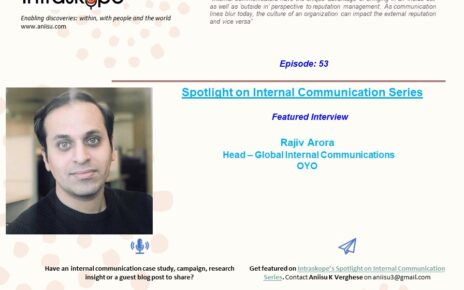Senior leaders are often elected by the company’s executive board and most managers are either selected from the workforce or hired laterally to meet the needs. In a democratic country the people choose representatives that help build sustainable communities by promoting critical issues in the central forums that run the government. That is where the dissimilarities end.
As many democratic countries (India, Afghanistan, Iraq etc) engage the electorate and decide their future through polls and I wanted to draw some parallels with internal communications and the democratic process which elects representatives to the governments globally.
Employees and citizens do have choices
While most citizens in countries can’t ignore their national leaders, with the electoral process most do have a choice to weed out candidates who do not lead the way. In the Indian electoral process the introduction of the None of The Above (NOTA) on the electronic voting machine gives voters the option to ignore all candidates, which they never had before.
Involving the electorate or employees gets far more engagement
I read an interesting post by Mike Klein on the need to tap into employee discretion even more than ever. This election say the maximum turnout in India, people were involved right from designing campaigns, selecting candidates in some pockets, providing feedback, reporting impact – the list goes on. By involving them in decisions – small and big, they did feel far more connected. Never before has an election seen the masses be so tuned in to what is taking place during the elections.
Show me your plans
While every candidate or party will claim to improve the lives of their constituencies like in organizations leaders need to explain the strategy and the way forward for people to truly believe and align. Every party’s election manifesto is the most awaited document since it is finally put down on paper and they can be held accountable! This need for transparency and accountability has spun advertisement campaigns such as the Idea No Ullu Banoing commercial.
No leader is above board
Like numerous cases in the corporate world where leaders were hauled over the coals for misleading the public, employees or shareholders politicians today have nowhere to run or hide. Their personal and professional lives are inseparable. It is unfortunate for them – probably the price they pay for holding public office. Be it Rob Ford’s (Toronto’s former Mayor) who admitted to taking drugs to those whose personal lives came in the public eye.
What happens in Vegas, doesn’t stay in Vegas
With social media bigger and better utilized in elections ever before the scales have tipped to the people. Nothing of consequence can ever be controlled within – be it a confidential party meeting or a decision that impacts jobs. If people don’t get heard internally, they vent it outside. No more can leaders in organizations or politicians ever claim to be insulated from the reach and power of social media.
Involve me in your governance
In the biggest election on the planet the Indian electorate (a majority of them below the age of 30) have sought opportunities to participate actively – either as activists, fundraisers or campaigners. Never before has there more demand for companies to run ethically and parties to be more inclusive. Some adopted the US style primaries to determine the best candidates while others went about seeking grass root solutions through mohalla sabhas the intention was clear – everyone needs to have a say and be involved to make a tangible impact.
Reach your audience where they are
It doesn’t matter which generation the leader belongs to. What truly matters is where your audience is, how they access information and how well you can reach them. Going by the channels leveraged by many leaders during the India elections – Twitter, 3D holograms, Google Hangouts, blogs among others, it is evident that marrying the messages and the mediums helped to enhance engagement among the population.
There is no doubt that there are lessons for internal communicators as these trends show. It is only a matter of time before employees will have similar expectations from us!
Have other ideas which we can tap from the democratic world for internal communications? Do share them here.



Very well analysis done about the internal communication of the electrol process. To add to your article one most important way to increase the internal communication with people is SMS’s and one to one talk with the people by the supporters of the party. These two factors have played a very important role in changing the political scenario of Delhi in December ’13 when Aam Admi Party (AAP) replaced the Congress government and secondly when BJP has come in power in this Loksabha Election. The contributions of AAP cannot be condemned in bringing more awareness in politics in each house in Delhi and also contributing people’s role in the development of the country. BJP has fiercely used its various communication channels as mentioned in your arcticle to make it BIG in the loksabha elections. Word of mouth is the best internal communication tool which I consider can make a remarkable difference.
Thank you Laxmi for sharing your views. Very relevant and agree that the type of channels/tools used do make a large impact. The point on word of mouth is excellent. it is such an important element and probably the least leveraged.